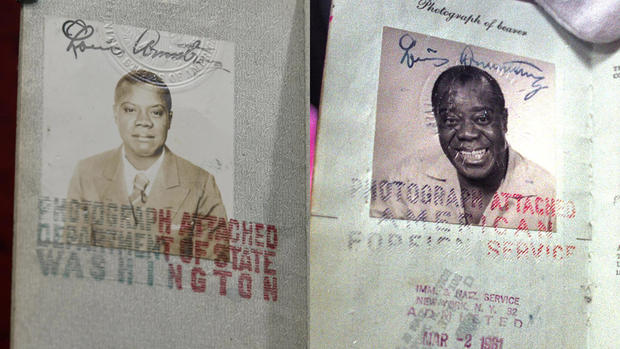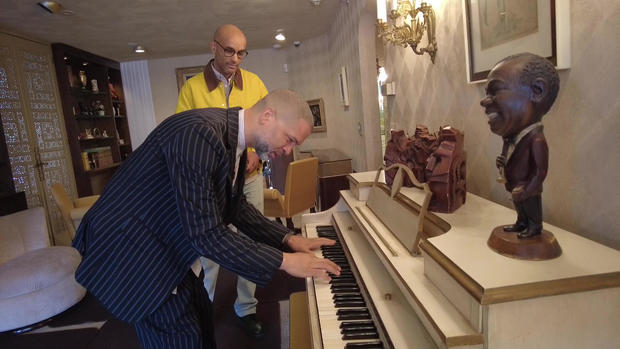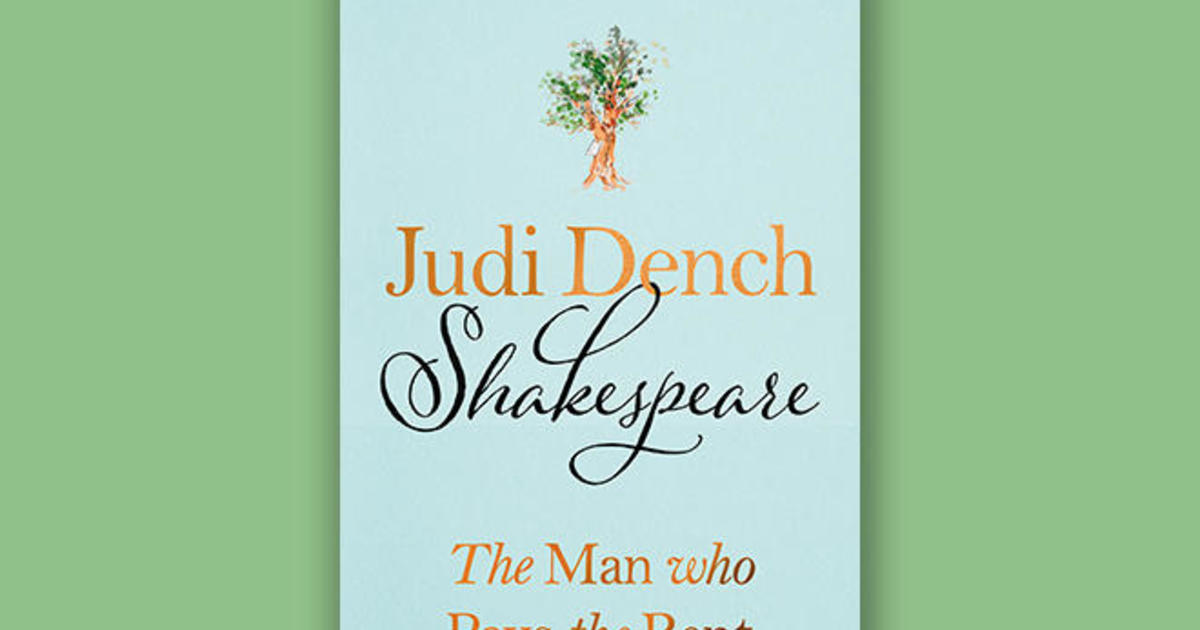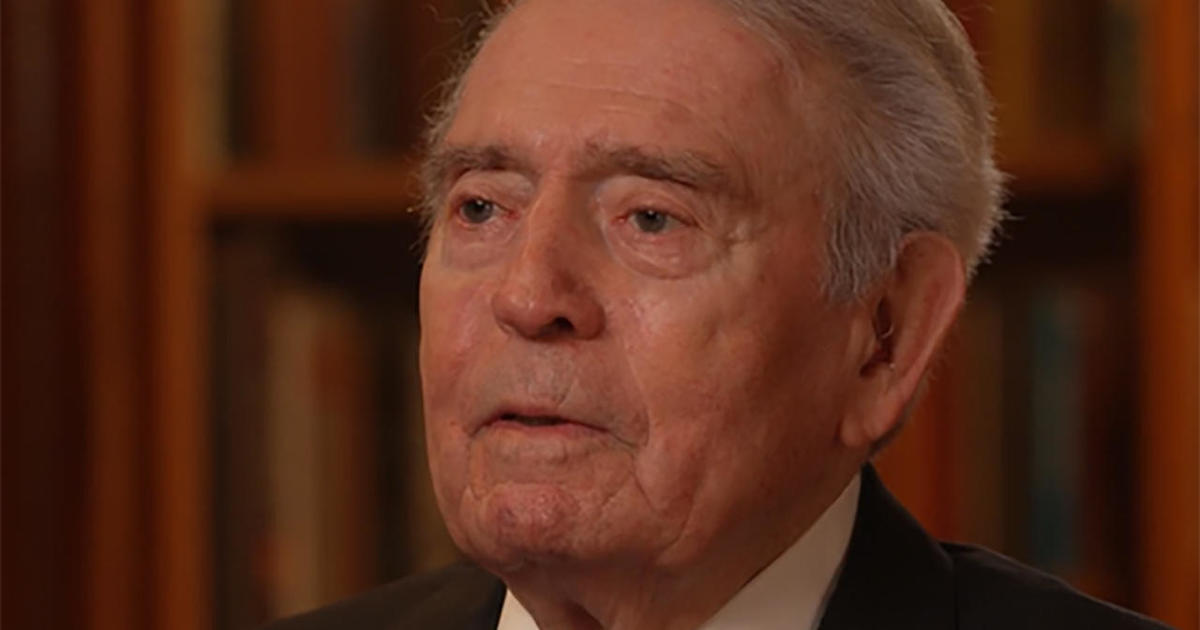Remembering Louis Armstrong
He answered to "Pops," "Satchmo," and "Louie." But he called himself Louis.
Documentary filmmaker Sacha Jenkins and jazz pianist Jason Moran have been immersed in Louis Armstrong's recordings and artifacts for years. They go with "Louis" as well. "Yeah, man. I have too much respect for that guy," said Jenkins.
Moran is the curator of the new Louis Armstrong Center in Queens, New York. Among the artifacts on display: Armstrong's first passport, from 1932, and his last, dated 1967. Moran noted the passport photos: "One very plaintive, but then the one at the end is like, 'I had a ball!'"
Armstrong liked to say that he was born on the 4th of July, but he was actually born on August 4, 1901. "This idea that many African Americans were still patriotic, in spite of the way America treated them, is something I think that's really important for people to understand about Louis Armstrong," said Jenkins.
In his documentary, "Louis Armstrong's Black & Blues," Jenkins explores how Armstrong, and his trumpet, navigated Prohibition, the Great Depression, world wars, and the civil rights era. "You're the most famous person in the world, and you're Black, but there's still places you can't go?" he said. "That must have been a real mind trick."
To watch a trailer for "Louis Armstrong's Black & Blues," click on the video player below:
Terry Teachout, the critic, called Armstrong a joyous genius, who confounded his critics by refusing to distinguish between making art and having fun. "He had fun making art, for sure," Jenkins said. "I think he felt very privileged to be able to be who he was and express himself the way he did. I mean, he just loved it."
And audiences loved him. Moran said, "He's one of the few people who has a hit, you know, decade after decade. Not only of his own compositions, but especially how he covers songs."
His "Hello Dolly" went to #1 in 1964:
He changed the way people heard Cole Porter, and George Gershwin:
Jenkins said, "He had something for everybody. Not many people in this era, or any other era, had the level of talent, diverse talent, that he had."
The genius trumpet player and singer was also an actor, though he mainly played himself, in films like "High Society," "The Glenn Miller Story," "The Five Pennies," "The Beat Generation," and "Hello Dolly." Jenkins said, "Who else would you want besides the real Louis Armstrong in your movie, right?"
Sanneh asked, "Is his role in some of these films to supply a kind of jazz credibility to the film?"
"To supply credibility to the film in general," Jenkins replied. "No one was cooler than he was at that point. Whether it's Bing Crosby or others, they looked to him for cues, for style, and from the way they sang, to the way they dressed, to the way they spoke."
In 1955 he even enlightened CBS News' Edward R. Murrow, who asked Armstrong, "What's the meaning of a 'cat'?"
"Cat? Cat can be anybody," Armstrong replied. "From the guy in the gutter to a lawyer or doctor. ... But if he's in there with a good heart and enjoy the same music together, he's a cat."
Armstrong grew up in an institution: the Colored Waif's Home in New Orleans. While there, he came across a cornet, a cousin of a trumpet. He explained how he learned to play while visiting a classroom in West Africa: "I was fortunate enough to run into a kind man by the name of Mr. Joe Oliver. And he was nice enough, he would help me in his spare moments. Which proves, if we help one another, you just can't miss."
By the time he was 21, he was living in Chicago, playing the jazz clubs. By 1928, he'd recorded his own version of a tune called "West End Blues." Moran said, "He just does this kind of fanfare of this kind of revolutionary technique on the trumpet."
It remains one of jazz's most influential recordings.
Offstage, he didn't always get star treatment. Jenkins said, "When he started playing at certain hotels, he said, 'Look. I ain't gonna play unless I can stay.' And so, that in and of itself is activism."
But by the 1960s, some people found Armstrong's big, bright smile a bit too ingratiating. "This guy was completely misunderstood," Jenkins said. "I think Black folks didn't necessarily think that he was for the cause, as they say. There's nothing wrong with being an artist who smiles. But in the time in which he was an artist smiling, it was the thing that was misunderstood."
Sanneh said, "There was an expectation of seriousness in the '50s and '60s, in jazz, and maybe in Black culture more broadly. And so, he was perceived as maybe not that serious?"
"Yeah, the times had changed," Jenkins said. "He pioneered this whole sound. Like, you think he's a joke. But this thing that you're so serious about came from him. Like, did you forget that part?"
Armstrong's 1967 version of "What a Wonderful World" is his most popular recording. Moran said, "It's got the strings, right? It's very, you know, beautiful and soupy!"
A "wonderful world" – was he out of touch? In 1970, Armstrong addressed his critics, with a remix of that song. "He knows that there's a world that wants to dominate the space with hate," Moran said. "And he knows that, you know, 'If I can talk about it from a love point of view, maybe that can help offset.'"
"Some of you young folks been saying to me, 'Hey Pops, what you mean, what a wonderful world? How about all them wars all over the place? You call them wonderful? And how about hunger and pollution? That ain't so wonderful, either.' Well, how about listening to old Pops for a minute? Seems to me, it ain't the world that's so bad but what we're doin' to it. And all I'm saying is, see, what a wonderful world it would be if only we'd give it a chance. Love, baby, love. That's the secret, yeah. If lots more of us loved each other, we'd solve lots more problems. And then, this world would be a gasser."
Louis Armstrong and his wife, Lucille, lived in Corona, Queens in a house that sits across the street from the new Armstrong Center. It's been preserved just as they left it, as Moran showed Sanneh.
"When musicians come into a room and they play in a space that they cherish, right? It's an offering," said Moran. "I think about the ghosts all the time. Like, do he and Lucille come visit? Because I believe they do."
Sanneh said, "Well, any musician has to spend a lot of time thinking about reverberation, right? And scientifically speaking, maybe those reverberations fade over time. Maybe, they never quite go away."
"They don't go away," said Moran. "I mean, thankfully, they don't go away."
For more info:
- Louis Armstrong Center, Queens, N.Y. (opens July 6)
- Louis Armstrong House Museum, Queens, N.Y.
- Louis Armstrong Educational Foundation
- "Louis Armstrong's Black & Blues" is available on Apple TV+
Story produced by Mary Raffalli. Editor: Steven Tyler.





